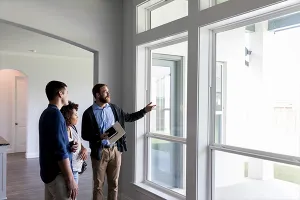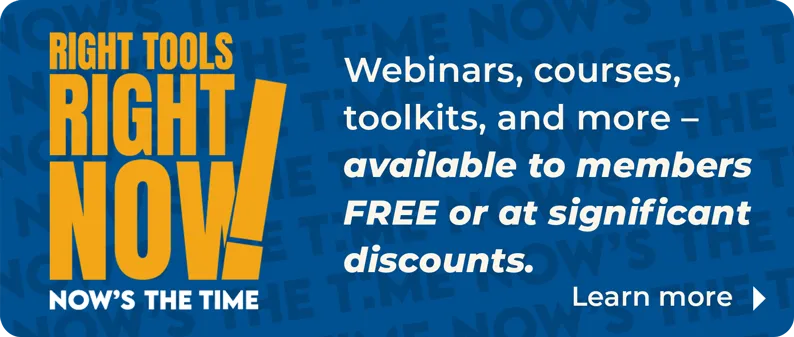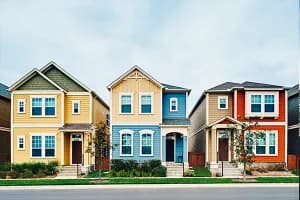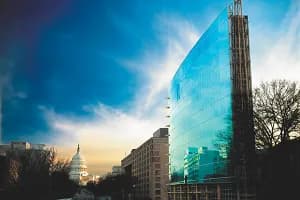This is a re-post from the Project for Public Spaces (PPS). It gives you, as an individual and part of a community, some great ideas to create placemaking opportunities in your communities and to make your community more walkable. As Fred Kent of PPS says, "Start with the petunias." See the original post on the PPS website and read more about placemaking.
For most of our history, streets belonged to and were collectively managed by those who lived and worked along them. Many of our current city laws – like those requiring property owners to maintain sidewalkspdf and clear snow – have their roots in this principle of individual responsibility. But along with these responsibilities, people have legal rights to use local streets and sidewalks for activities and purposes that are often not well publicized or supported by government agencies.
While people’s backyards are places for private gathering and recreation, the front area of a person’s house and the street beyond it can be an “urban commons” – a place where neighbors bump into each other, children play together, and friendships are forged through impromptu conversations, block parties, and all kinds of other events. To make that happen, a neighborhood needs small places where people can gather (a stoop, a front yard, a corner, the sidewalk,) as well as opportunities to bring people together (Little Free Libraries, a community bulletin board, gardening, a public art event, or even a stoop sale). Across the country, people are starting to reclaim their streets and front yards as important social places.
Below are some ideas for how an individual can create Streets as Places in their own community. Help us add other examples to this page! Add your suggestions about other ways people can create streets that bring people together in the comments section, or by emailing transportation@pps.org, and check out ways that community groups and governments can support Streets as Places, too.
1. Activate the Street in Front of Your House
Install a Little Free Library
Little Free Library in Malibu, CA. | Photo by Don McCullough via Flickr
Little Free Libraries promote reading and build a sense of community by providing free miniature libraries that can be installed outside homes and businesses, or in other public spaces. There are more than 25,000 Little Free Libraries installed around the world that encourage people to get to know their neighbors, linger on the street, and take or leave a book to read.
Make Your Front Yard a “Playborhood”
Children play on the neighborhood map in Mike Lanza’s driveway | Photo by Mike Lanza
In Menlo Park, CA, resident Mike Lanza created a “playborhood” by building an outdoor family room in his front yard for his kids and neighborhood families. The Lanza family yard includes a sandbox, fountain, message board, playhouse, and in-ground trampoline, which provides a safe and easily accessible place for his own three young boys and other neighbors to play together. Lanza advocates for the creation of “Playborhoods,” neighborhoods that have easy, daily ways for kids and their families to be active and creative.
2. Transform Your Block
Create Murals or Public Art
One of Isaiah Zagar’s Magic Gardens | Photo by Jennifer Jameson via Flickr
Murals and art are an easy way to add color, beauty, and local flavor to an entire block, particularly on underutilized building walls or vacant lots. In Philadelphia, a city known for its murals, Isaiah Zagar is an award-winning mosaic mural artist whose work can be found on more than 200 public walls throughout the city and around the world. A nonprofit organization, Philadelphia’s Magic Gardens (PMG), was created to help share Zagar’s work and to more broadly educate the public about folk, mosaic, and visionary art. PMG preserves, interprets, and provides access to Isaiah Zagar’s unique mosaic art environment and his public murals.
Build a Better Bus Stop
After seeing children too close to heavy traffic on Brooklyn Boulevard, Jerry Evans, a resident of Brooklyn Center, Minnesota created and installed benches, a retaining wall, and landscaping at the bus stop adjacent to his home so that transit riders and their children have an inviting and safe place to wait.
Turn your Intersection into a “Public Square”
One corner of Share-It Square in Portland, OR | Photo by Robbi Baba via Flickr
Share-It Square, located in Portland, OR’s Sellwood neighborhood, is a street intersection that local residents have transformed into a community gathering place. The project started with the addition of a resident-maintained solar-powered teahouse on one corner, and other small improvements followed, such as a mural on the intersection pavement, an information stand, a cobb oven, a produce-sharing stand, a miniature community library, and a children’s playhouse. When the city realized how successful these interventions were at both calming traffic and building community, they passed an ordinance to encourage “intersection repair” in all 96 neighborhoods of Portland. Portland City Repair is a small grassroots non-profit that now supports and inspires communities and individuals to creatively transform the places where they live. The group’s central project focuses on painting intersections to create vibrant, colorful spaces that calm traffic and attract people.
3. Host a Neighborhood Party
Organize a Porchfest
Larchmere Porchfest in Cleveland, OH in 2013 | Photo by Zender Agenda via Flickr
Porchfest is a grassroots festival that began in Ithaca, NY, which has now taken place in more than 40 cities nationwide. The festival transforms neighborhood porches into makeshift stages and venues, bringing people out into the street to enjoy music, art, and dance. More importantly, the event helps folks reacquaint themselves with what it means to be a good neighbor. At the inaugural Oakhurst Porchfest in Decatur, Georgia, hundreds of participants enjoyed more than 130 different performers and locations. With spectators spilling out into streets, and walking and biking between locations, vehicles slowed down and neighborhood streets became calmer and friendlier.
Throw a Block Party
Williamsburg Walks block party in Williamsburg, Brooklyn | Photo by Ryan Kuonen via Flickr
In Williamsburg, Brooklyn, an annual neighborhood block party called Williamsburg Walks brings residents together to socialize and experience their street as a vibrant public space. Neighbors take over a portion of Bedford Avenue to stroll, play, and picnic. Most cities have low-cost permitting processes to host a block party; look into your own local policies to learn about how far in advance to file an application, about signatures you likely need to gather from local neighbors, and rules about sound amplification and alcohol consumption. You can also think about local organizations, businesses, neighborhood associations, and schools who can partner with you, helping to provide lists of invitees, volunteers, and equipment.
Participate in National Night Out
A National Night Out Block Party in Burien, WA | Photo courtesy of Michael B. via Flickr
Since 1948, National Night Out has been an annual community-building event that promotes neighborhood camaraderie to make neighborhoods more livable and safe. National Night Out occurs annually on a specific evening in August, with thousands of neighborhood watch groups, civic groups, and law enforcement agencies organizing and hosting National Night out block parties.
4. Support Your Local Main Street
Shop and Eat Local
A local book store is frequented by the residents of Montclair, NJ | Photo by Montclair Center BID via Facebook
Frequenting your local Main Street is a great way to get to know your neighbors and to invest in your community. Whether it’s shopping at a boutique, eating at a locally-owned restaurant or attending special events, spending time on your Main Street supports the local economy and provides opportunities to make new friends and connections. In Montclair, New Jersey, Bloomfield Avenue – which was awarded a Great American Main Street award in 2015 – is the commercial and cultural heart of the community, with locally-owned restaurants, arts institutions, and shops. A local Business Improvement District helped to transform the street, which had vacancy rates of around 50 percent in the 1990’s, into a thriving corridor by improving building facades, hosting fun events, beautifying the street, and recruiting unique businesses and institutions.
5. Get to Know Your Neighbors
Start an Online Community Message Board
Front Porch Forum is an email-based community message board developed by Burlington resident Michael-Wood Lewis in 2006 that allows residents to post questions, comments, requests, or offers on a neighborhood-specific online forum. The Burlington neighborhood model has since expanded to cover much of Vermont. In Bologna, Italy, a similar initiative called Social Streets started on the street Via Fondazza, using Facebook groups to promote interaction between neighbors. The primary goal of this “Social Street” initiative is to help neighbors share resources, request help, organize activities, or exchange views and opinions. The group has grew quickly in its first two years, and it has become the template for many other community efforts. To facilitate the creation of other Social Streets, the founding group has published a “how to” resource on their website.
Put up a Community Bulletin Board
A local bulletin board can help neighbors learn about important opportunities, assets, services, and events available in their community. Highland Park, NJ has a community bulletin board that has been around for 30 years, encouraging locals and businesses to share knowledge and advertise community activities and events.
6. Walk Your Kids to School
Kids enjoy their sunny walk to school | Photo by Heather Bowden via Flickr
Walking to school gives kids and parents the opportunity to be active and to better get to know their neighborhoods. A Walking School Bus gives parents a way to collaborate, taking turns in walking small groups of children to school and using designated pick up locations and timetables. The program allows families to save time in the morning and build relationships with their neighbors, while making the trip to school a fun, healthy experience.

















